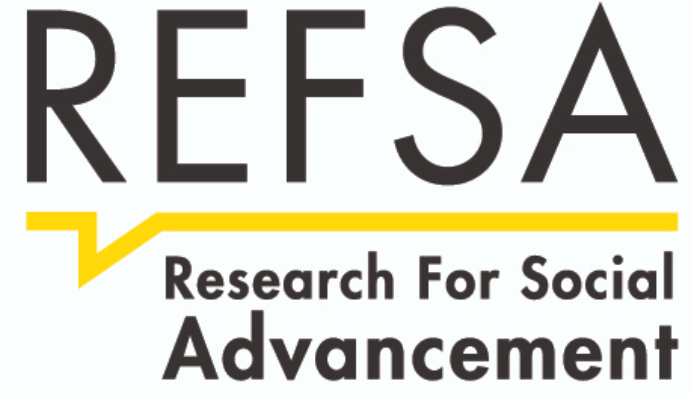Media Statement by Research for Social Advancement (REFSA) on 23 August 2024
On 20th and 21st August, Research for Social Advancement (REFSA), with the support of Invest Selangor and Selangor Information Technology & Digital Economy Corporation (SIDEC), successfully hosted a semiconductor study tour focusing on factories and industry players in Selangor and Negeri Sembilan. Following on from a similar tour organised by REFSA in May in the Northern Region, this tour aims to deepen our understanding of the chip-making process and the regional differences in Malaysia’s ecosystem. Joined by Deputy Minister of International, Trade and Industry YB Liew Chin Tong and Selangor Exco for Investment, Trade and Mobility YB Ng Sze Han, the study tour was led by REFSA Executive Director Tan E Hun, Invest Selangor CEO Dato’ Hassan Azhari Haji Idris and SIDEC CEO Yong Kai Ping. The tour brought together a diverse group of policymakers and thought leaders representing organisations such as the Malaysia Investment Development Authority (MIDA), Khazanah Nasional Bhd, Institute for Strategic and International Studies (ISIS), Yusof Ishak Institute for SouthEast Asian Studies (ISEAS); Centre for Asian Studies, National University of Malaysia (UKM), Merdeka Centre, Bait-al Amanah and Khazanah Research Institute to name a few.
Over the two days, participants met with more than eight industry players and ecosystem enablers cutting across the entire semiconductor value chain, from integrated circuit (IC) design, wafer fabrication, test, assembly and packaging, to precision engineering. Companies from diverse origins representing a worldwide footprint were visited including NXP, QES, JF Tech, Nexperia and Onsemi. The tour also visited key ecosystem enablers such as SIRIM, SIDEC and MIMOS. SIDEC hosted an IC design roundtable attended by anchor participants of the IC Design Park in Puchong such as AppAsia, Skyechip, SensoremTek and Weerox. The roundtable was also attended by the Chairman of Social and Economic Research Initiative (SERI) Nurul Izzah Anwar.
It became apparent from the tour that our local semiconductor players have been aggressive in growing their markets regionally as well as globally. The tour also highlighted the challenges faced by companies operating in different sectors of the value chain, further nuanced by the market segments that they play in. Among the key challenges highlighted that were also echoed in Penang was the shortage of highly skilled engineers, high price of electricity as well as power interruptions that disrupted manufacturing operations. Companies also highlight the intense competition between countries to attract FDI, manifested through generous incentives and attentive and proactive relationship building efforts by government officials at all levels.
A key asset in Malaysia that stood out during these past two tours was the quality of our local engineers. In the right environment under the guidance of dynamic and innovative leadership, our talent is able to produce products and engineering solutions that are globally competitive and commercially lucrative. We have also built considerable assets to enhance the ecosystem through various facilities, services and R&D available to industry from the likes of MIMOS, CREST and SIRIM. However in order to remain competitive, continuous improvement in the quality of our workforce is necessary.
“Although Malaysia has developed a mature ecosystem that allows many semiconductor companies especially in the backend to “plug and play”, there are still gaps in the test, assembly and packaging portion of the supply chain”, says Lim Li Lian, Deputy Director of REFSA. “These include lack of locally made machines and equipments to securing materials that are used directly in the process, with a manufacturer citing that up to 95% of this portion of expenses needs to be imported.”
The IC design roundtable highlighted how geopolitical instability has created an extremely opportune time for Malaysia in this space. IC design is one of the source domains of the geopolitical rivalry today and hence where its impacts are more widely felt. “The good news is that our IC design talents are best in class, some of the teams having worked for 10-30 years with the likes of Intel. The question then is not only how Malaysia can produce more IC design engineers, but also create an environment that attracts experienced engineers out of the safe and rewarding cocoon of an established career in an MNC, to come out and start their own design companies,” says Lim Li Lian.
Ultimately, Malaysia is blessed with the benefit of being geologically safe from natural disasters such as earthquakes and typhoons, a strong ecosystem in the backend of the semiconductor manufacturing supply chain built over 50 years of experience, strategic geographic position for trade, a long history of being politically neutral to US and China, a developed and functioning legal and financial framework and a multicultural and multilingual workforce. In the arena for attracting FDI it is however increasingly being challenged by the large incentives offered by other countries with deeper pockets. This does not mean that we can’t win. Tan E Hun, Executive Director of REFSA commented: “For Malaysia, the winning strategy is one that has extreme clarity on what objectives the country wants to achieve and a strategic plan that is focused on how to get there. The National Industrial Master Plan (NIMP) 2030 serves an important function in this regard, setting out the specific activities in the value chain that we want to attract with a clear understanding of what we want from them, and what we can offer them.”
E Hun further stressed: “The final key ingredient is of course execution. Here, the mission approach embedded in the NIMP 2030 and championed by REFSA for many years provides a model to break down silos and use a whole of government approach, critical elements for success, especially in the context of the GEAR uP programme announced by the Prime Minister. We hope that by bringing together various stakeholders, and facilitating dialogues and discussions through study tours such as these, we can foster and build the collaborative relationships that are vital to the success of Malaysia’s second takeoff.”
